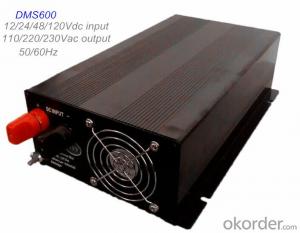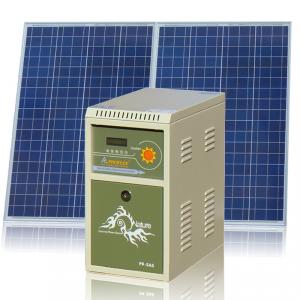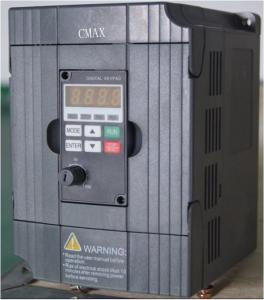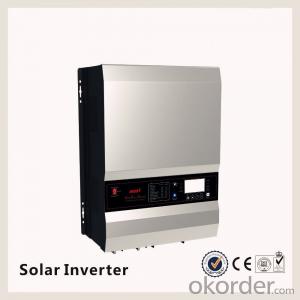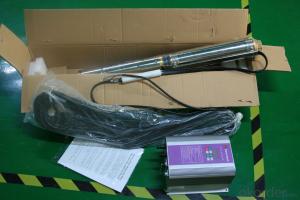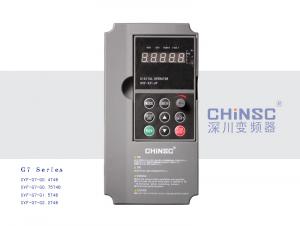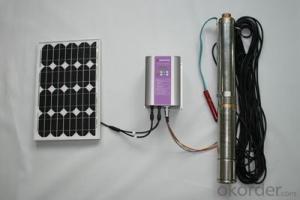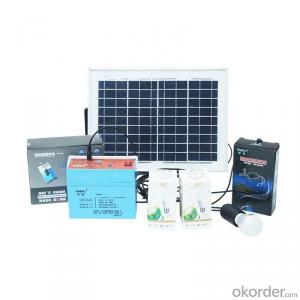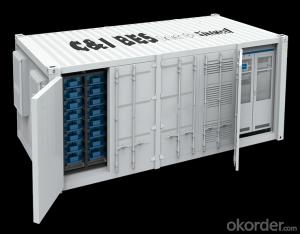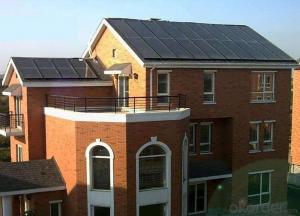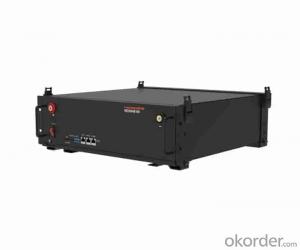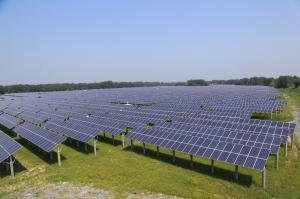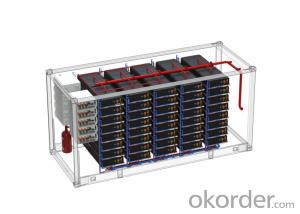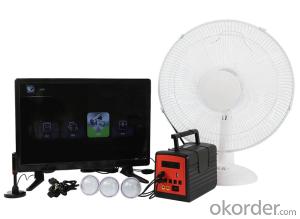Solar Inverter Ac Output
Solar Inverter Ac Output Related Searches
Best Inverter Solar Panel Solar Panel On Roof Rack Inverter To Solar Panel Ratio Solar Panel Decking Lights Solar Panel Inverter Box 1000 Watt Solar Panel Inverter 12 Volt Solar Panel Inverter Plastic Solar Lanterns Buy Solar Panel Inverter Solar Panel Inverter CostHot Searches
Solar Hot Water Collectors For Sale 8 Inch Water Pump For Sale Solar Inverter For Split Ac Solar Inverter With Ac Outlet 1 Hp Solar Water Pump Price Jain Solar Water Pump Price Kirloskar Solar Water Pump Price Aluminum Ac Coil Scrap Price China Solar Ac Module Solar Pump Inverter Price Lorentz Solar Water Pumps Price Price Of Water Cooler Evacuated Tube Solar Collectors Price Lorentz Solar Pumps Price Cost Of Evacuated Tube Solar Collectors Buy Hot Water Bag Fish Tank Air Pump Price Aquarium Air Pump Price Air Pump Price Chlorine Dosing Pump PriceSolar Inverter Ac Output Supplier & Manufacturer from China
Okorder.com is a professional Solar Inverter Ac Output supplier & manufacturer, offers integrated one-stop services including real-time quoting and online cargo tracking. We are funded by CNBM Group, a Fortune 500 enterprise and the largest Solar Inverter Ac Output firm in China.Hot Products
FAQ
- Generating free and renewable energy from the sun, solar energy systems have the potential to significantly decrease electricity bills. Unlike conventional electricity sources like fossil fuels, solar energy doesn't necessitate ongoing expenses for fuel or maintenance. Once installed, a solar energy system can produce electricity for many years, offsetting a substantial portion of a household's or business's electricity usage. By utilizing the power of the sun, solar energy systems can generate electricity when it is most in demand during daylight hours. Consequently, solar energy can directly compensate for electricity consumption during peak times, diminishing the need to draw power from the grid. Consequently, electricity bills can be drastically reduced or even eliminated, depending on the size and efficiency of the solar energy system. Furthermore, solar energy systems often provide homeowners and businesses with the opportunity to take advantage of numerous financial incentives and programs. These incentives may include tax credits, grants, or policies such as net metering, which allows surplus solar energy to be fed back into the grid and credited towards future electricity bills. These incentives can augment the financial advantages of installing solar energy systems, making them even more cost-effective. Additionally, solar energy systems offer long-term savings. As the cost of electricity from conventional sources continues to escalate, solar energy remains a steadfast and predictable investment. By securing a fixed cost for electricity generation, solar energy systems safeguard against future price hikes and inflation, ensuring that electricity bills remain low and foreseeable for years to come. Overall, solar energy systems provide a sustainable and economically viable solution for reducing electricity bills. By tapping into the abundant and free energy of the sun, households and businesses can enjoy substantial savings, financial incentives, and long-term stability in their energy costs.
- Yes, solar energy systems can certainly be used for powering industrial processes. Solar power has gained popularity in recent years as a sustainable and renewable energy source. Industrial processes often require a significant amount of energy, and solar power can be harnessed to meet these demands. There are several ways in which solar energy systems can be utilized for industrial processes. One common method is through the installation of solar photovoltaic (PV) panels. These panels convert sunlight directly into electricity, which can then be used to power various industrial machinery and equipment. By integrating solar PV systems into the existing infrastructure, industries can reduce their dependence on traditional fossil fuels and lower their carbon footprint. In addition to generating electricity, solar thermal systems can also be used to power industrial processes. Solar thermal technology uses the sun's heat to produce steam, which can then drive turbines or provide direct heat for industrial applications. This method is particularly useful for industries that require high-temperature processes, such as manufacturing, chemical production, or food processing. Implementing solar energy systems for industrial processes offers numerous benefits. Firstly, it helps to reduce greenhouse gas emissions and combat climate change. Solar power is a clean energy source that releases no harmful pollutants or greenhouse gases during operation. By transitioning to solar energy, industries can contribute to a more sustainable and environmentally friendly future. Moreover, utilizing solar power can help industries save on energy costs in the long run. While the initial investment for installing solar energy systems may be high, the operational costs are significantly lower compared to traditional energy sources. Once the systems are in place, industries can benefit from reduced electricity bills and even generate excess energy that can be sold back to the grid. Lastly, solar energy systems offer a reliable and resilient power source. They can operate even in remote areas or during power outages, ensuring uninterrupted production processes. Additionally, solar panels have a long lifespan and require minimal maintenance, making them a viable long-term solution for industrial power needs. In conclusion, solar energy systems can indeed be used for powering industrial processes. With the advancements in solar technology and the increasing focus on sustainability, more and more industries are embracing solar power to meet their energy demands. By harnessing the sun's energy, industries can reduce their environmental impact, save on energy costs, and ensure a reliable and resilient power supply for their industrial processes.
- The cleanliness of solar panels significantly affects their performance. When solar panels are dirty or covered with dust, dirt, or debris, it can obstruct sunlight from reaching the surface of the panels. This reduces the amount of sunlight that can be absorbed and converted into electricity, resulting in a decrease in the overall efficiency and productivity of the solar panels. Regular cleaning and maintenance of solar panels are necessary to ensure optimal performance and maximize energy generation.
- Solar energy systems can indeed be utilized in regions that are susceptible to hurricanes or tornadoes. Although these natural calamities can potentially inflict harm on solar panels and other system components, employing appropriate preparation and installation methods can alleviate these risks. The design and structural integrity of solar panels themselves are crucial considerations. High-quality panels are constructed to withstand powerful winds and extreme weather conditions. They undergo rigorous testing and certification processes to meet specific standards, including wind resistance ratings. In hurricane or tornado-prone areas, it is essential to install panels explicitly engineered to endure the potential wind speeds and impacts associated with these events. Furthermore, employing proper installation techniques can enhance the resilience of a solar energy system. For instance, utilizing reinforced mounting structures, securing panels with additional brackets or fasteners, and ensuring secure connections between panels, inverters, and batteries can prevent damage caused by strong winds or airborne debris. In certain cases, homeowners may opt to invest in solar panel tracking systems that automatically adjust panel positions to minimize wind resistance during severe weather occurrences. This feature protects the panels and increases their likelihood of surviving hurricanes or tornadoes with minimal damage. Moreover, having a backup power storage system, such as batteries, is essential to ensure uninterrupted power supply during and after severe weather events. This backup system stores excess energy generated by the solar panels, enabling the system to function independently of the grid during power outages caused by hurricanes or tornadoes. Overall, although there are risks associated with utilizing a solar energy system in hurricane or tornado-prone areas, careful planning, proper installation, and the use of resilient components allow for the harnessing of solar power even in these challenging environments.
- Yes, solar energy systems can be used in areas with high levels of bird activity. However, precautions should be taken to minimize any potential negative impact on birds. This can be achieved by implementing bird-friendly designs and techniques such as using mesh screens or netting, angling solar panels to reduce reflection, and avoiding installation near nesting sites or migration routes. Regular monitoring and maintenance can also help identify and address any issues that may arise.
- Installing solar energy systems offers various financing models to cater to individual preferences and financial capabilities. Here are some commonly used financing options: 1. Complete Purchase: The most direct approach is to outright purchase the solar energy system. Although it requires a significant upfront investment, it grants the homeowner or business owner full access to the benefits and incentives associated with solar energy, such as tax credits and reduced utility bills. 2. Solar Loans: Many financial institutions provide specialized loans for solar installations, offering lower interest rates and longer repayment terms compared to conventional loans. With a solar loan, the system owner makes monthly payments to the lender while enjoying the financial advantages of lower utility bills and potential tax credits. 3. Power Purchase Agreements (PPAs): A PPA involves a contract between the solar system owner and a third-party solar provider. Under this agreement, the solar provider installs and maintains the system on the customer's property, and the customer agrees to purchase the electricity generated by the system at a predetermined rate. This eliminates the need for upfront costs and allows immediate savings on the electricity bill. 4. Solar Leases: Similar to PPAs, solar leases involve a third-party solar provider installing and maintaining the system. However, instead of purchasing the electricity, the customer pays a fixed monthly lease payment for the use of the solar energy system. While this option may not provide as much savings as other financing models, it requires minimal upfront investment. 5. Property Assessed Clean Energy (PACE) Financing: PACE financing enables property owners to finance the installation of solar energy systems through an assessment on their property tax bill. The loan is repaid over a period of time, typically 10 to 20 years, through an additional assessment on the property taxes. PACE financing is particularly advantageous for property owners who may not qualify for traditional loans or prefer to spread out the cost of the solar installation over a longer duration. These examples highlight the different financing models available for installing solar energy systems. It is crucial to carefully evaluate each option, considering factors such as upfront costs, long-term savings, and individual financial goals, to determine the most suitable financing arrangement for specific circumstances.
- Solar energy systems have several insurance considerations to take into account. The first and most important consideration is to ensure that the system is sufficiently insured against damage or loss. This typically involves obtaining property insurance coverage that specifically includes the solar panels and related equipment. In addition, liability insurance is crucial for solar energy systems. This insurance protects against any damages or injuries that may arise from the system, such as property damage or personal injury caused by a falling panel. The liability coverage should be enough to cover the potential risks and liabilities associated with installing, operating, and maintaining the system. It is also important to think about business interruption insurance. This type of coverage provides financial protection in case the solar energy system becomes damaged or malfunctions, resulting in a loss of power production and revenue. Business interruption insurance can help cover the costs of repairs, replacement equipment, and any income lost during the downtime. Lastly, it is advisable to seek guidance from an insurance professional who specializes in renewable energy systems. They can ensure that all potential risks and exposures are adequately covered. They can also help identify any additional insurance considerations specific to the solar energy system and provide guidance on the appropriate types and levels of coverage needed to protect the investment effectively.
- Yes, a solar energy system can definitely be used for charging electric vehicles. Solar panels, which capture sunlight and convert it into electricity, can be installed on rooftops, carports, or open spaces to generate clean and renewable energy. This energy can then be used to charge electric vehicles, eliminating the need for traditional fossil fuel-based charging methods. Solar-powered charging stations are becoming increasingly popular and are being installed in various locations, such as parking lots, highways, and residential areas, to support the growing demand for electric vehicles. By utilizing solar energy for charging electric vehicles, we can significantly reduce greenhouse gas emissions and dependence on non-renewable energy sources, thus contributing to a more sustainable and environmentally friendly transportation system.










